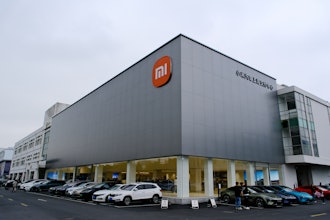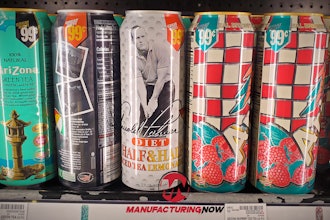Each year corroded machinery, buildings and equipment cost American industry an estimated $7 billion. Corrosion is a costly problem. But by understanding its root causes, effective steps can be taken to prevent and combat it.
There are several types of corrosion costs that plant workers must consider:
• Direct loss or damage of metal structures due to corrosion. An example is a hot water tank that has corroded and must be scrapped.
• Maintenance costs attributed to corrosion. Any metal surface that must be painted every few years to control corrosion falls into this area.
• Indirect losses resulting from corrosion. These losses may result from leakage and fires. Explosions attributed to leakage, power failures, facility shutdown and labor losses are also indirectly the result of corrosion.
The first step toward controlling these costs requires understanding what corrosion is, and what causes it.
What is rust?
When iron or steel corrodes, the result is iron oxide, or what we call rust. Steel is mostly composed of iron ore. In its natural state, iron ore looks much like rust: dark red and finely grained, with a tendency to hold moisture.
Iron ore is a stable substance until it is converted into iron or steel, naturally weaker elements. When steel is exposed to moisture and oxygen, it immediately starts regressing to its natural state. Although protective measures have been taken, a large part of the steel made in this century has already rust back to an oxide, its natural state.
Three elements are required for corrosion to exist: a protected metal, a corroded metal, and a current-conducting medium between the two. When two dissimilar metals are brought into contact, one will become the protected metal, and the other will become the corroded metal. Plant operators may recognize environmental situations that are conducive to corrosion.
For example:
• If galvanized fittings are used on steel pipe, the galvanized (zinc) fitting will become corroded, while the steel remains protected.
• Steel or other metals under stress will become corroded, while the unstressed steel is protected from corrosion. This is the reason you see rust pitting on steel.
• Freshly cut steel will corrode more rapidly. Threads cut on pipe will always rust first.
Even if a piece of steel is not in contact with another metal, neither under stress nor freshly cut, it will rust when exposed to the weather. This is because steel is not entirely uniform in composition – slight variations in density and composition will occur within a single piece of steel, which results in corrosion.
The third ingredient needed for steel to corrode is an electrolyte. This is normally a liquid or water-containing substance that conducts the corrosion's current from the protected metal to the corroded metal. The most common current-carrying substance is water. Rain, dew, humidity in the air, etc., all serve as efficient electric conductors. Steel corrodes very slowly in desert climates where humidity is low and rainfall rare. In areas of high humidity and frequent rain, protecting steel is critical. Plant operators will recognize some of the following environments that offer electric currents to speed the corrosion process:
• Adding salt to water greatly enhances its current-carrying ability. Thus, steel exposed to seawater or salt spray will corrode more rapidly than steel in fresh water. Atmospheric corrosion is greater in areas near the oceans, due to the effect of salt air. Concentrated brine solutions, such as those used in the food-processing industry, cause severe corrosion.
• Industrial smoke and fumes contain acids, alkalies and other chemicals, which serve as current conductors. Consequently, atmospheric corrosion in industrial areas is more severe than in rural areas.
• Soil, clay and earth materials are also good conductors of electricity. Pipelines and other steel buried in the ground will be prone to corrosion unless protected. Just as soil varies considerably in composition, it also varies in its electric conductivity: some soils cause more severe corrosion than others.
Corrosion control
To make the use of steel and other metals practical in construction and manufacturing, some corrosion-protection practices must be employed. Otherwise, the life of steel and other metals will be limited, reducing efficiency and escalating the cost of maintenance. There are several effective ways to stop corrosion:
1. Impressed current. By using suitable current-generating equipment and controls, it is possible to reproduce a current equal in strength to the corroding current, but flowing in the opposite direction. This type of protection is generally limited to pipelines, buried tanks, etc., and requires careful engineering and layout. Used improperly, an impressed current can promote corrosion.
2. Sacrificial metals. Steel can be protected by adjacent placement to a dissimilar metal. For example, if zinc or magnesium is placed in direct contact with steel, it protects the steel from corrosion. Here, zinc and magnesium serve as sacrificial metals that not only protect the area of immediate contact, but also protect beyond the metal in each direction. Protection from rust by sacrificial metals is commonly used in several forms:
• Zinc or magnesium blocks are often used to protect ship hulls, water tank interiors and other submerged surfaces.
• Complete covering of the steel with the sacrificial metal is often done. Galvanized steel, for example, is steel covered with zinc. The zinc is sacrificial and will protect the base steel.
• Zinc-rich coatings may be applied to a steel surface to provide cathodic protection. Zinc-rich coatings consist of 85% to 95% zinc metal in a suitable binder. The zinc particles, deposited by painting, protect the steel.
3. Primers. Primers and finished coatings protect metal surfaces by providing a barrier between the steel and the corroding elements. They also prevent moisture from reaching the surface of the steel. A coating film protects underlying metal substrates in three ways:
• Coatings can slow the rate of diffusion of water and oxygen from the environment to the metal surface. This slows the corrosion process.
• The paint film can slow the rate of diffusion of corrosion products from the metal surface through the paint film. This also slows the corrosion process.
• The anti-corrosive pigments contained in quality primers change the surface properties of the base metal. The metal develops a high electrical resistance as a result. Different pigments accomplish this reaction in different ways. Primers absorb and tie up moisture so that it does not react with the steel.
How to choose a rust-proof coating
Considering the following criteria can reveal the most effective type of rust-proof coating needed for a specific project.
Quality of coat/applicatio - What level of anti-corrosive paint is needed? How important is it for paint to be fade-resistant and/or abrasion-resistant? How often do you expect to repaint? Is there an application preference: brush/roller or spray?
Aesthetics - What materials are going to be coated? How important is it for the paint coat to look attractive? Is color retention important?
Price - Typically, higher quality paint increases price. Are touch-up applications being considered when estimating the maintenance costs? What is the value of the paint selected? How often will it need to be recoated?
Environmental regulations - What are the local environmental regulations for paint and coatings? Is the paint within these standards? How will the paint process affect nearby surroundings? As of June 2002, the U.S. government will enact regulations to lower the amount of paint contaminants to increase environmental protection. The new volatile organic compound (VOC) limits will fall to 450 grams/liter of paint. Tighter restrictions will follow in California, Arizona, New York and New Jersey, minimizing the solid volumes to levels as low as 340 grams/liter.
Coatings
There are three general types of coatings used in maintenance painting. Based on quality, price, application and aesthetic requirements, plant operators can choose the appropriate coating from the following:
• Alkyd enamels - Alkyd enamels are designed for indoor and outdoor surfaces in moderate to severe conditions. This coating offers solid corrosion resistance for up to 3-5 years. Alkyd enamels provide high-gloss color, resist against color fading, and can be applied using a brush roller or spray. • Epoxy coatings - Epoxy coatings are used for indoor or outdoor surfaces in industrial environments where color retention and gloss are not important. The quality of the coat will be better than an alkyd enamel since it withstands harsh industrial environments. Epoxy coatings are best applied by spray, but brushes and rollers can also be used.
• Polyurethane coatings - A polyurethane coating is the best quality paint of all three options. It withstands the most severe environments and can last up to 10 years. It provides strong color and gloss retention and is resistant to abrasion. Polyurethane coatings are applied by spraying.
Conclusion
Paints work because they slow down corrosion by reducing the rate of current flow in the electrochemical corrosion process. By understanding corrosion plant operators can predict where rust is likely to occur, and recognize the environmental factors in their plant that promote corrosion. The good news is that while corrosion can be costly, it doesn't have to be. Paints are a cost-effective measure to ensure protection from corrosion. Regular maintenance by plant operators can minimize the appearance and effects of corrosion.


















